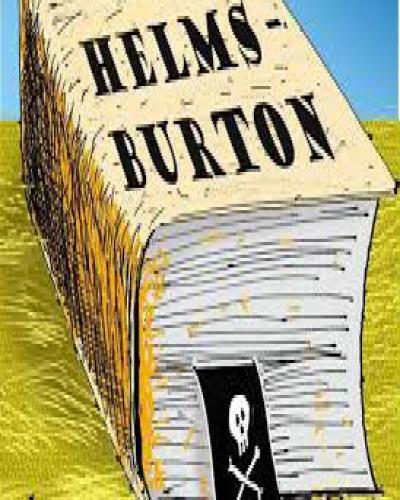Since the triumph of the 1959 Cuban Revolution, US policy towards the nation has been designed to suffocate Cuba’s economy and thereby force regime change.
It is not the case that the Helms-Burton law has been, as some have suggested, an ”accident” of the United States’ foreign policy. Instead, the 1996 piece of legislation was but another step in Washington’s continued efforts to destroy the Cuban Revolution by exerting economic pressure.
Enacted in 1962 by then US President J. F. Kennedy, the US blockade policy against Cuba prohibits US companies from engaging in trade and commerce with the Caribbean state, 90 miles to its south. This policy affected business interests of third countries too, since it prohibited, for instance, products that contain Cuban nickel from being imported into the US.
Later, with the collapse of socialism in Eastern Europe in the late 1980s and the early 1990s, many believed that Cuba would be the next domino to fall. But as time went by this didn’t happen. So, in 1992 the US Congress passed the so-called “Torricelli Law,” which established what has since been the principal point of dispute between the United States, Europe and practically the rest of the world: the extraterritorial application of US legislation.
With the Torricelli law, the US blockade was extended beyond the country’s boundaries by punishing subsidiaries of US companies in third countries that do business with Cuba. This meant, for instance, that no General Motors owned car plant in Great Britain could have commercial relations with Cuba.
This led to an unanimous disapproval by the potentially affected third countries. And, no doubt, the Torricelli law increased Cuba's costs for commerce and transport of goods, but also it complicated Cuba’s reinsertion into the world economy, which the Caribbean state began to do in the 1990s.
Nonetheless, the Torricelli law failed again to achieve Washington’s expressed goal of destroying the Cuban Revolution and bringing US-style politics to the Caribbean state.
In February of 1995, a year before the Helms-Burton Act of 1996, House Representative, and New York Democrat Charles Rangel introduced a bill, the Free Trade with Cuba Act, designed to remove the blockade and engage Cuba. Congress rejected the bill, and opted instead for a hard-line stance.
A year later, in 1996 the Cuban Liberty and Democratic Solidarity Act -- better known as The Helms-Burton Act-- came along. Named after late Senator Jesse Helms, a Republican of North Carolina, and Representative Dan Burton, also a Republican from Indiana, it was passed by Congress on March 6, 1996 and later signed into law by then US President Bill Clinton on March 12, 1996 -- shortly after Cuba shot down two small US Cessna aircraft that had violated Cuban airspace.
It is worth noting that Havana had repeatedly warned US authorities that it would no longer tolerate violations of its airspace and territorial waters, which were a common practice by US-based anti-Cuban groups, including the so-called Brothers to the Rescue -- a Miami-based right-wing organization, whose leader, CIA operative José Basulto, had long been involved in terrorists plots against Cuba.


